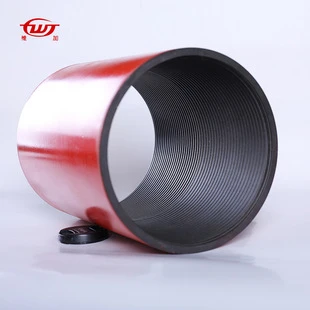- Afrikaans
- Albanian
- Amharic
- Arabic
- Armenian
- Azerbaijani
- Basque
- Belarusian
- Bengali
- Bosnian
- Bulgarian
- Catalan
- Cebuano
- Corsican
- Croatian
- Czech
- Danish
- Dutch
- English
- Esperanto
- Estonian
- Finnish
- French
- Frisian
- Galician
- Georgian
- German
- Greek
- Gujarati
- Haitian Creole
- hausa
- hawaiian
- Hebrew
- Hindi
- Miao
- Hungarian
- Icelandic
- igbo
- Indonesian
- irish
- Italian
- Japanese
- Javanese
- Kannada
- kazakh
- Khmer
- Rwandese
- Korean
- Kurdish
- Kyrgyz
- Lao
- Latin
- Latvian
- Lithuanian
- Luxembourgish
- Macedonian
- Malgashi
- Malay
- Malayalam
- Maltese
- Maori
- Marathi
- Mongolian
- Myanmar
- Nepali
- Norwegian
- Norwegian
- Occitan
- Pashto
- Persian
- Polish
- Portuguese
- Punjabi
- Romanian
- Russian
- Samoan
- Scottish Gaelic
- Serbian
- Sesotho
- Shona
- Sindhi
- Sinhala
- Slovak
- Slovenian
- Somali
- Spanish
- Sundanese
- Swahili
- Swedish
- Tagalog
- Tajik
- Tamil
- Tatar
- Telugu
- Thai
- Turkish
- Turkmen
- Ukrainian
- Urdu
- Uighur
- Uzbek
- Vietnamese
- Welsh
- Bantu
- Yiddish
- Yoruba
- Zulu
Understanding Casing and Collar in Oil and Gas Drilling Operations
Understanding Casing Collar An Integral Component in Oil and Gas Exploration
In the oil and gas industry, the importance of reliable and efficient drilling technologies cannot be overstated. Among these technologies, casing collars play a pivotal role in maintaining the structural integrity of wellbore operations. Understanding the function, types, and applications of casing collars is essential for industry professionals involved in drilling and completion activities.
What is a Casing Collar?
A casing collar is a mechanical device used in the construction of oil and gas wells. It is a thickened ring of metal or composite material located at specific intervals along the casing string, which forms the protective lining of a wellbore. The primary purpose of the casing collar is to provide structural support and to facilitate the installation of various components, such as cementing plugs, bonding agents, and perforating guns.
Types of Casing Collars
Casing collars come in different types, each designed to serve particular functions. The most common types include
1. Standard Casing Collars These are used to connect different sections of casing pipes. They ensure that each segment is securely fastened, maintaining the continuity needed for appropriate pressure management within the wellbore.
2. Latch-Type Collars Equipped with a latching mechanism, these collars can securely hold an object in place until it is released. They are particularly useful in scenarios where temporary installations are necessary, such as running tools or conducting testing operations.
casing collar

3. Specialty Collars Designed for specific applications, these collars may incorporate features unique to certain drilling environments. For example, collars that withstand extreme temperatures or pressures are essential in deepwater or geothermal drilling.
4. Flow Control Collars These collars provide control over fluid flow in the well. They may be equipped with valves or other mechanisms to manage the inflow and outflow of drilling fluids, enhancing operational efficiency.
Applications of Casing Collars
Casing collars are utilized across various stages of drilling and completion processes. During drilling, collars provide the necessary support to the casing and facilitate the proper setting of casing strings. This is crucial for maintaining the wellbore's stability and preventing casing collapse.
Additionally, during the cementing process, collars serve as anchoring points for cement plugs, which seal joints between casing sections and prevent fluid migration. The successful placement of these plugs is vital for ensuring that the integrity of the wellbore is maintained and that hydrocarbons are contained within their designated zones.
Casing collars also play a role in the completion phase, where they assist in the installation of downhole equipment such as perforating guns and packers. The proper alignment and secure fastening provided by collars ensure the effective functioning of these tools, which are essential for extracting hydrocarbons from the reservoir.
Conclusion
In conclusion, casing collars are indispensable components of the oil and gas drilling process. They contribute significantly to the structural integrity of wellbores, enhance operational efficiency, and ensure safe extraction of hydrocarbons. Understanding the types and applications of casing collars can help industry professionals optimize their drilling operations and mitigate potential risks associated with wellbore stability. As the oil and gas industry continues to evolve, advancements in casing collar technology will likely enhance drilling practices, making them safer and more efficient. By acknowledging the importance of these components, companies can ensure not only the success of their operations but also the safety and environmental sustainability of their activities in this crucial sector.
-
Tubing Pup Joints: Essential Components for Oil and Gas OperationsNewsJul.10,2025
-
Pup Joints: Essential Components for Reliable Drilling OperationsNewsJul.10,2025
-
Pipe Couplings: Connecting Your World EfficientlyNewsJul.10,2025
-
Mastering Oilfield Operations with Quality Tubing and CasingNewsJul.10,2025
-
High-Quality Casing Couplings for Every NeedNewsJul.10,2025
-
Boost Your Drilling Efficiency with Premium Crossover Tools & Seating NipplesNewsJul.10,2025







